Our Blog - Salzburg, Austria - Part 2
The Collegiate Church at Universityplatz took more than 70 years to complete, and it was consecrated in 1707. It became a military hay warehouse during the time of an occupation by Napoleon and then a garrison church during the monarchy when the university was dissolved. It returned to being a university church again in 1964, and was renovated in 2013. It is a major work of Baroque architecture and was a model for a lot of late Baroque churches in Southern Germany. Here, the architect wanted the design of the detailed decorative elements to take a back seat in favor of the experience of the entire building. One way he attempted to do this was having the church interior in a uniform white color without any paintings.
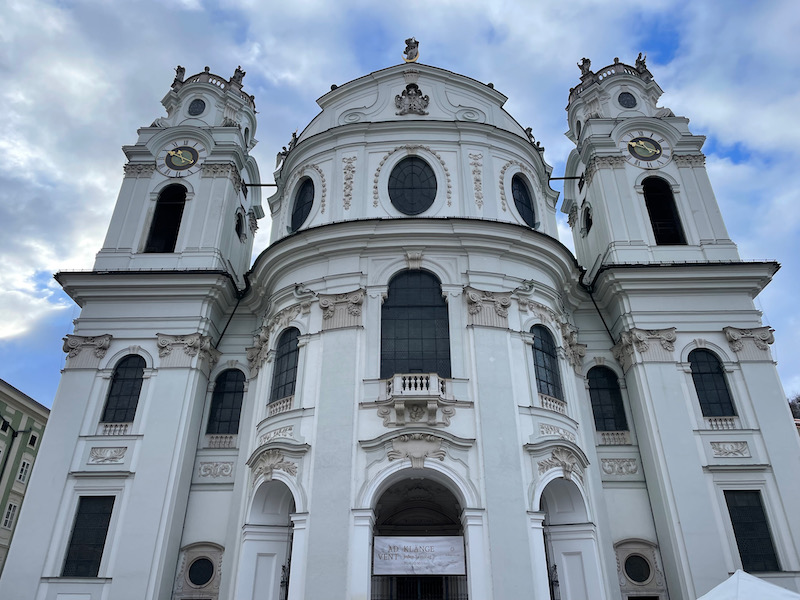
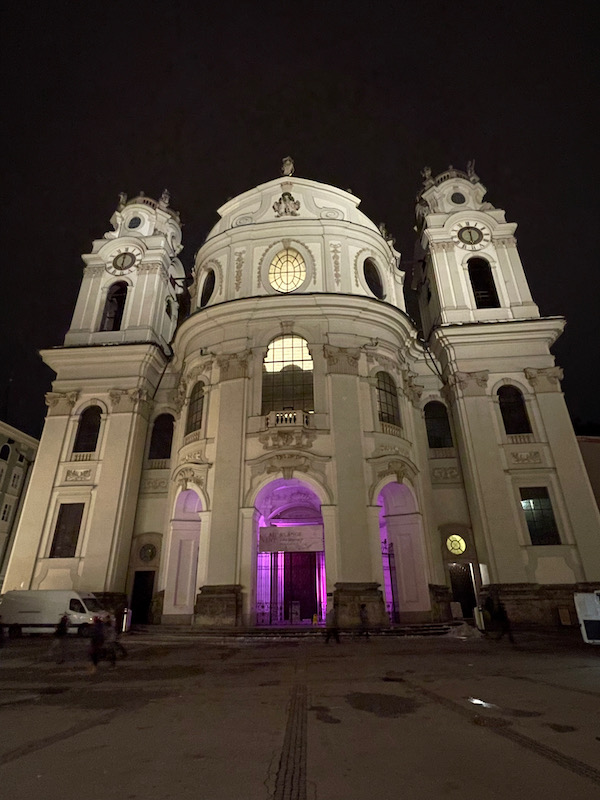
I have 2 pictures that are almost the same, with the exception of the time. I wanted to show the difference between daytime and nighttime within the church. The first was taken the first evening, and you can see how dark the windows are up in the dome. Then compare that to the 2nd picture, and how brilliantly white everything is.

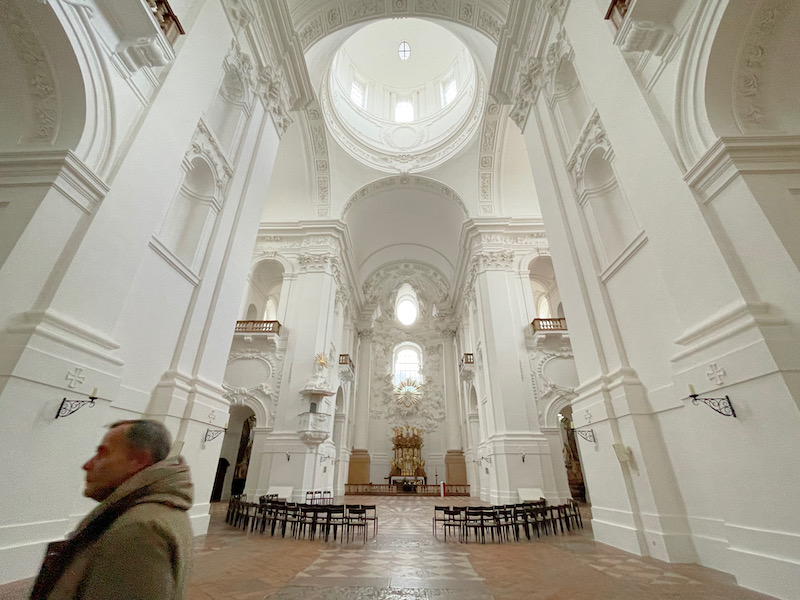
The design of the high altar, created in 1738, comes from the Old Testament and refers to a saying in the book of Proverbs: “Wisdom has built their house, carved their seven pillars.” There are 4 marble columns around the back, with gold statues showing allegorical figures of music, poetry, painting and architecture, as well as the four faculties (medicine, theology, philosophy, and jurisprudence). At the top of the altar itself are statues of 7. Then moving up, there are stucco figures including Mary on a crescent moon in front of the bright window of the apse, surrounded by sculpturally modeled clouds, numerous angels and a halo of rays.
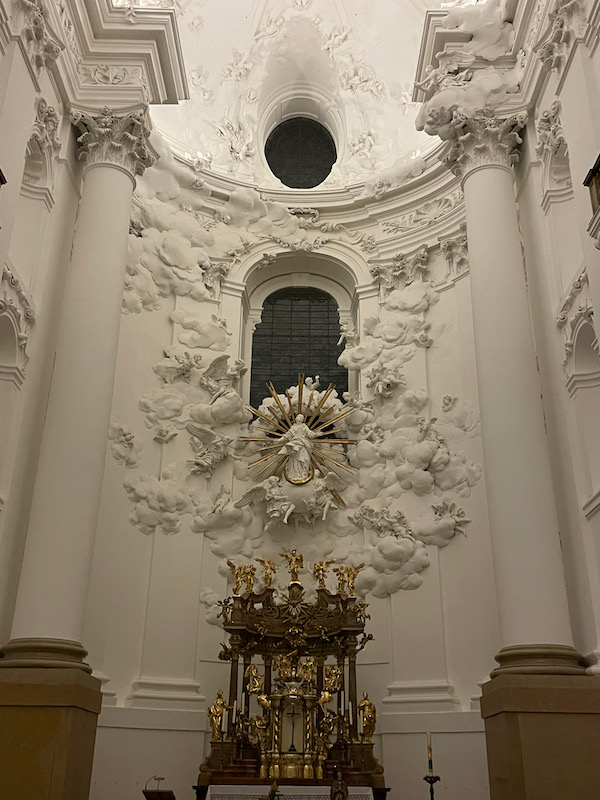
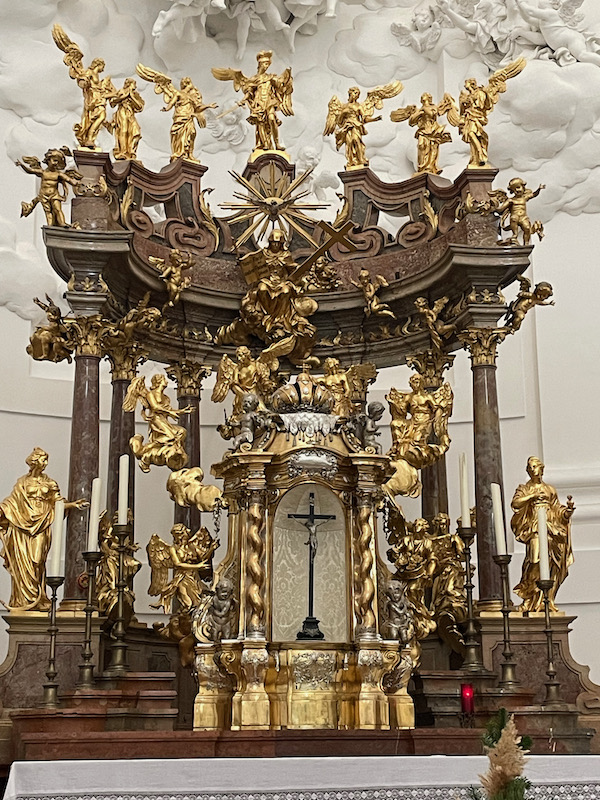



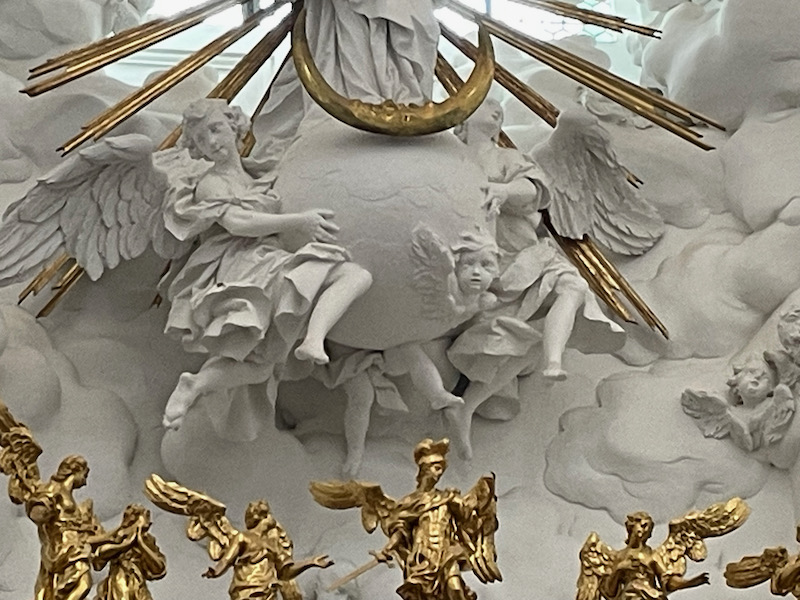

The two altars in the transepts look very similar with the 3 green columns and the two statues on the sides. While these look like marble, they are actually painted wood.


Across from the altar above is this one. Most of the altars have some sort of icon or medallion below the painting, and I thought this icon was very nice.
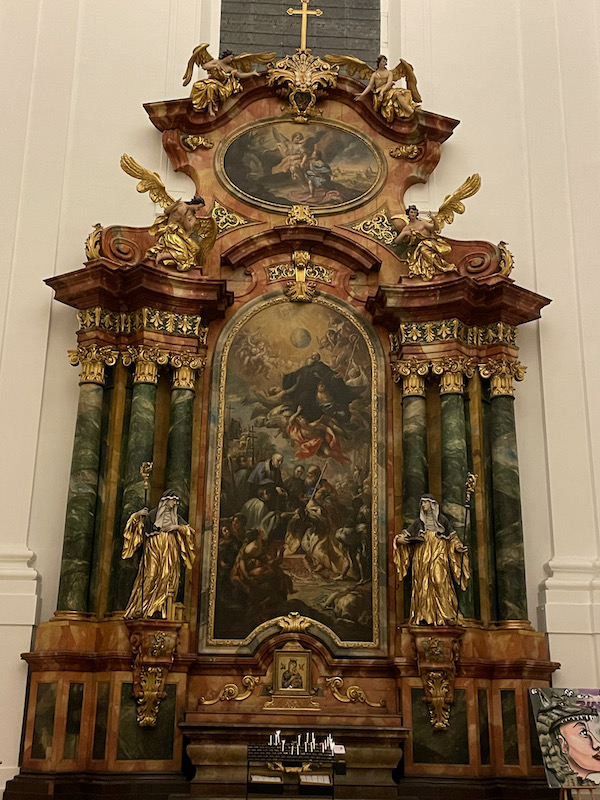
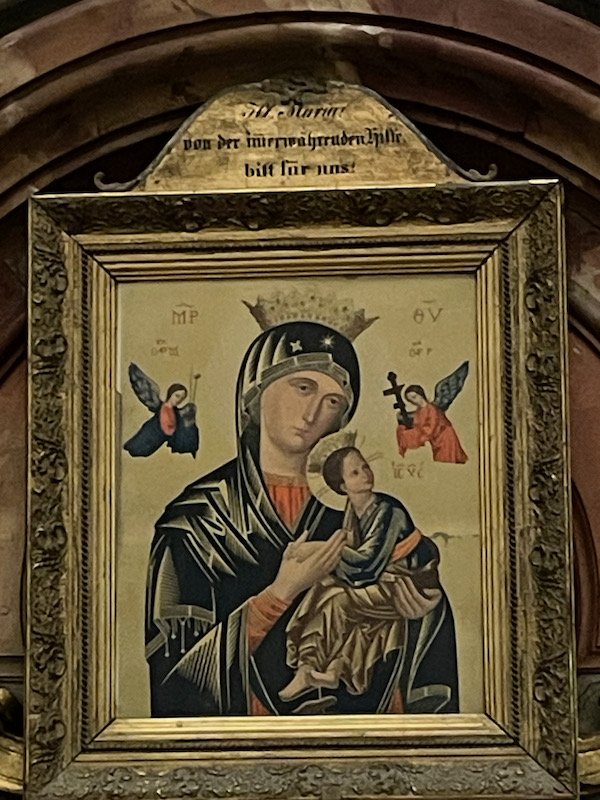
There are 4 "collegiate" altars that are dedicated to the saints of the 4 faculties (medicine, theology, philosophy, and jurisprudence). I grabbed pictures of of them (although only 3 of the 4 came out well). This first one is the Ivo Altar of the faculty of law/jurisprudence. In the painting in the middle is a painting showing a boy handing a piece of paper to St. Ivo von Kermartin, the patron saint of lawyers. A close-up to show a bit better how the altars are painted wood to look like marble. The two figures on the sides are of the Holy Gregor and Anselm.


This one is St Luke's altar of the Medical faculty. Saint Luke is showing writing in the painting, with the figures of St. Aegydius and Magnus on the sides.
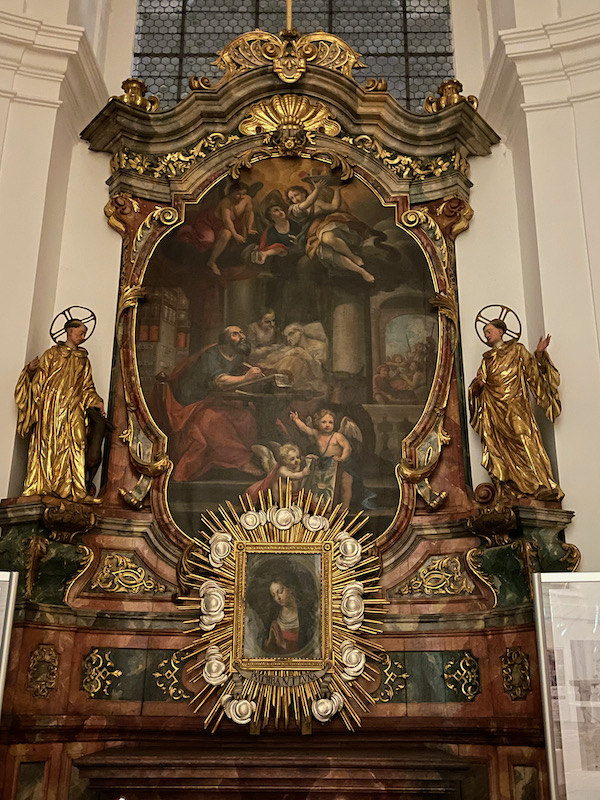
Catherine Altar of the Faculty of Philosophy, showing Saint Catherine of Alexandria being carried aloft by angels. The side statues show Lanfrankus and Bede Venerabilis.
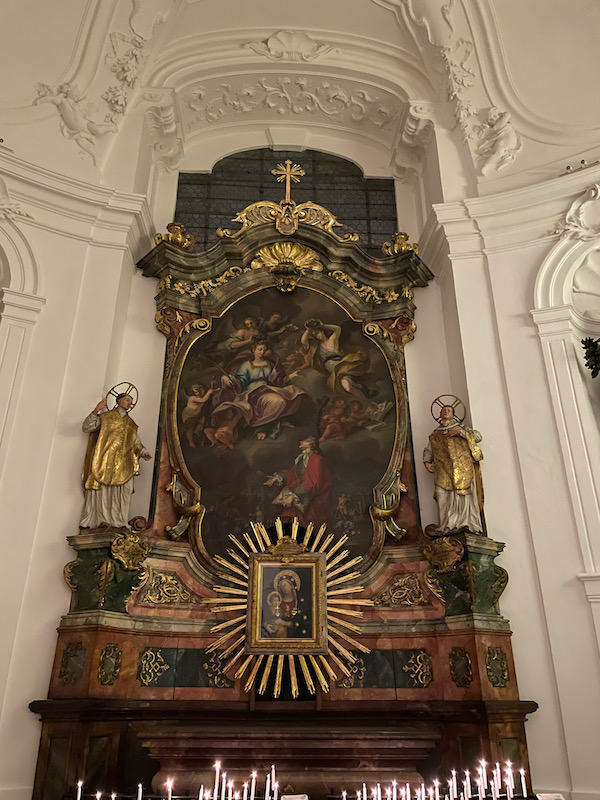
The landmark of the city (and probably the easiest thing to see) is the Hohensalzburg Fortress, which sits up on top fo a plateau in the middle of the city. It is one of the largest castle complexes in Europe, and also one of the best preserved. It dates back to the 11th century when a residential tower was built by Gebhard, the archbishop of Salzburg. This was expanded with fortification walls, towers, and a larger residential building over the next few centuries.
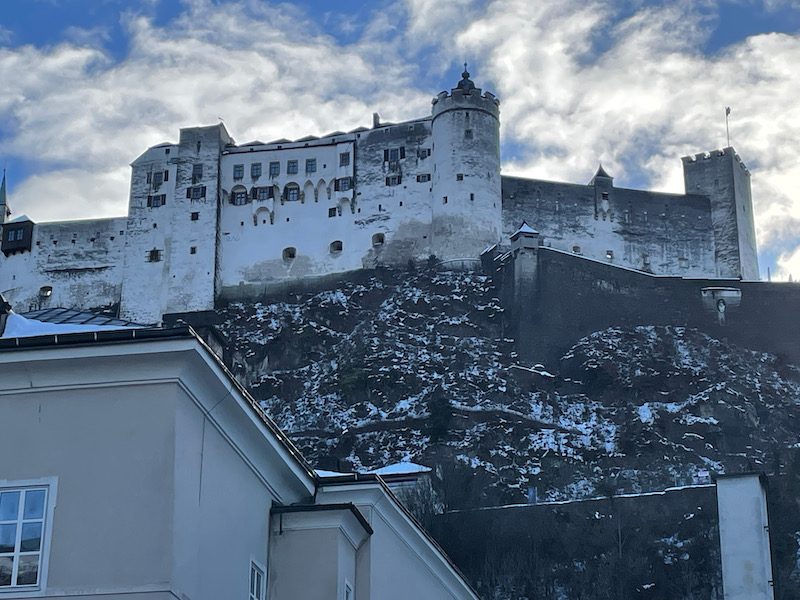

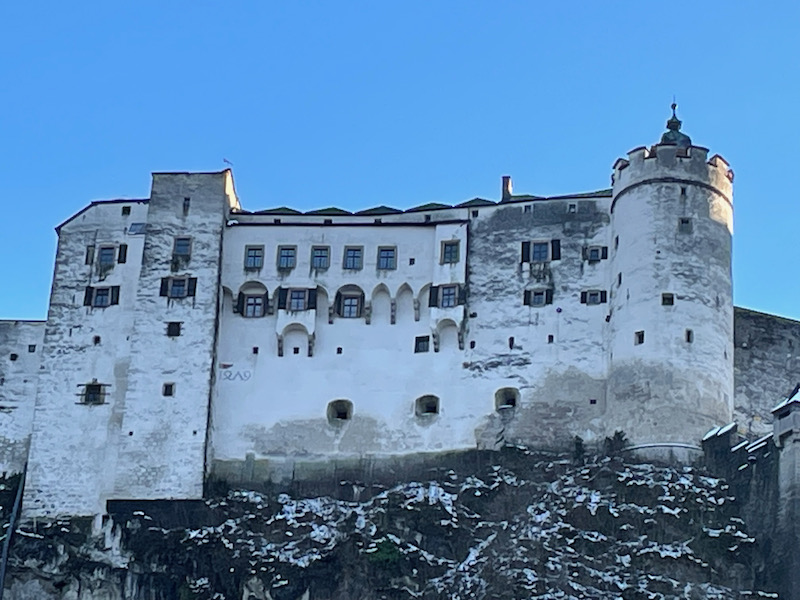
While you can walk up to the fortress, we decided to take the funicular, and got a great view of the old city and river on the ride up. This funicular was built in 2000 but there is another funicular, called the Reißzug, which dates back to 1460, making it the oldest surviving cable car in the world (today, it is only used for transporting goods up and down).
We normally tend to go places on off-season to try to avoid lines ... which as you can see, we didn't do this time. You can see a bit of the outside of the building and the tower. Most of the walls here that you see date to around 1465, with the Reckturm (the watchtower) was built around 1500. The coat of arms that can be seen in a few places is that of Archbishop Paris von Lodron, who was responsible for quite a few of the building projects of the fortress.

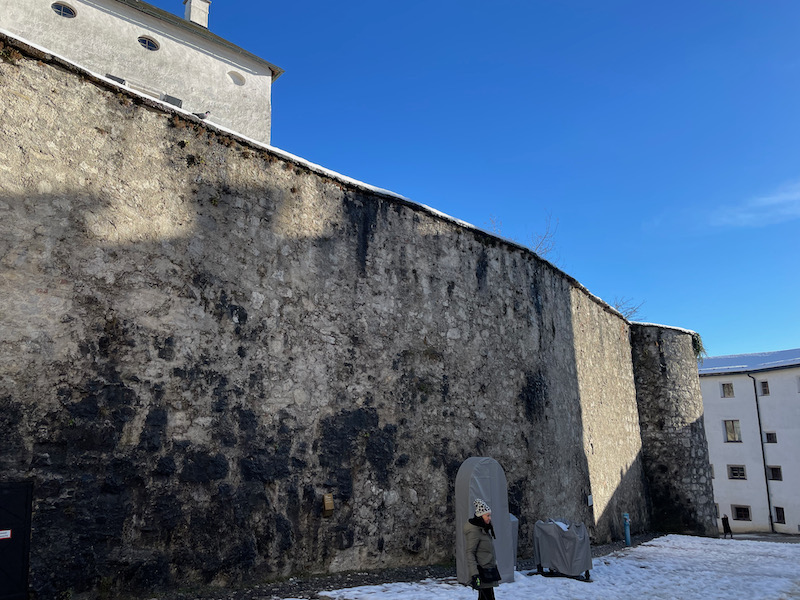
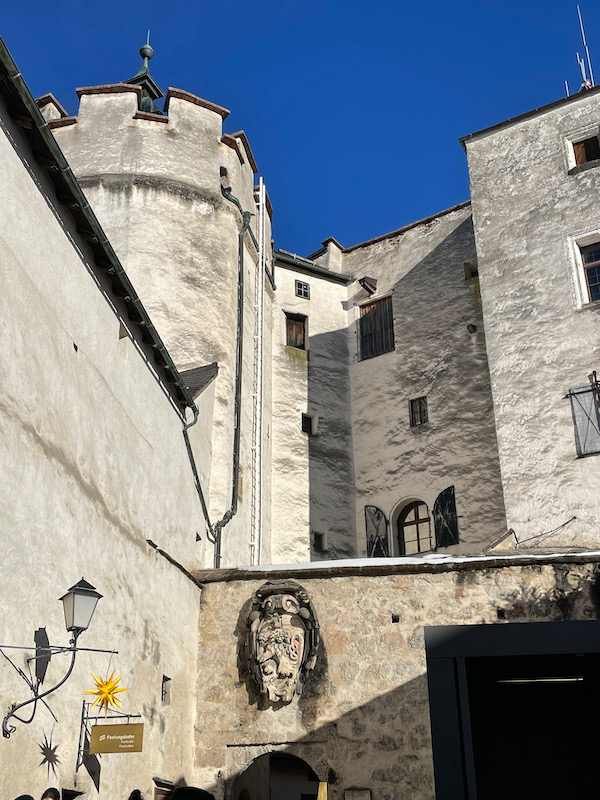

St. George's Chapel was built under the rule of Archbishop Keutschach from 1500 to 1502.
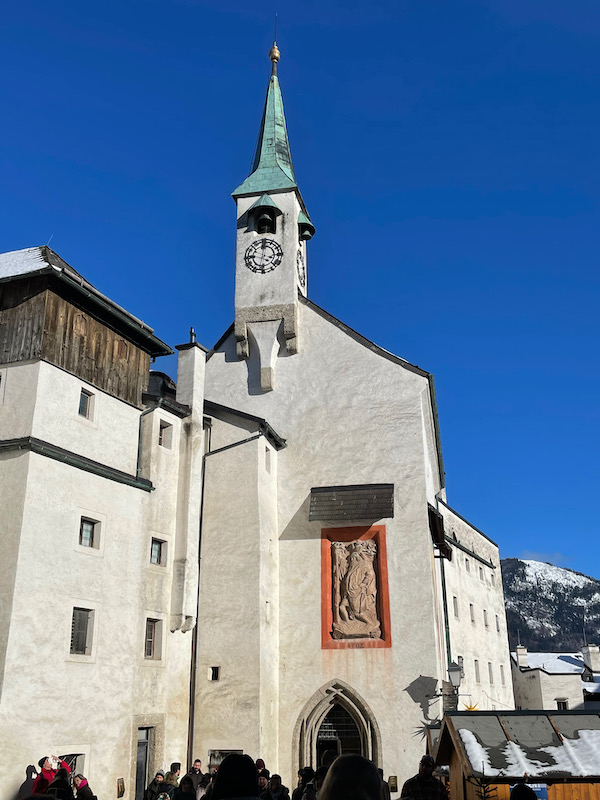
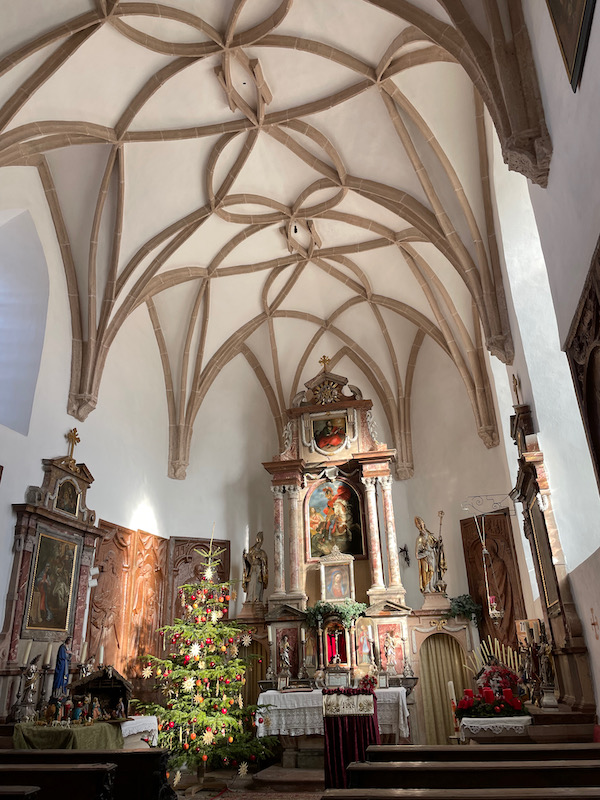
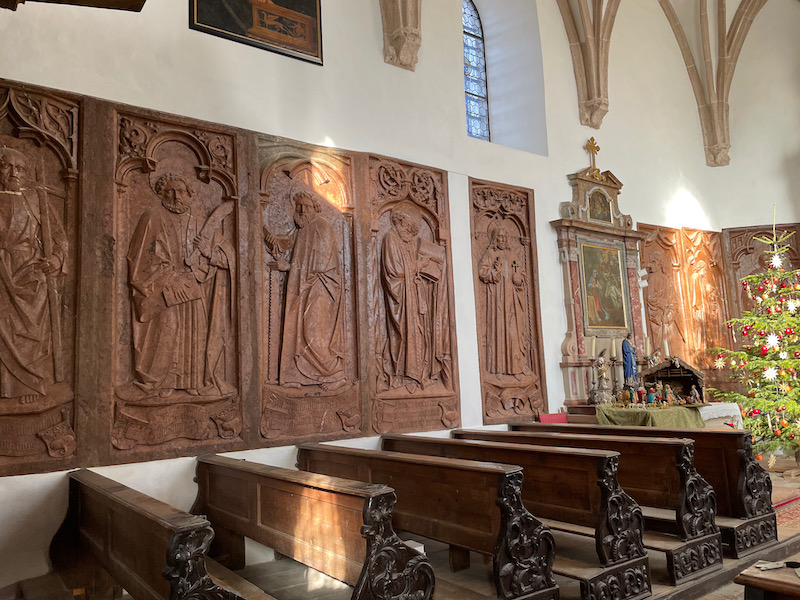
We went ahead and opted for a ticket that gave access to the state rooms and royal apartments. The state rooms were built around 1500 under Prince Archbishop Leonhard von Keutschach. The Golden Hall served as a ballroom. The wood-paneled room has a blue wooden ceiling with golden joists and buttons that looks like a star-filled night sky. The 17 meter long beam that supports the roof is painted with the coat of arms of both Archbishop Leonhard von Keutschach (the black turnip) and of the empire as well as those from the most powerful German cities and those dioceses allied with Salzburg.
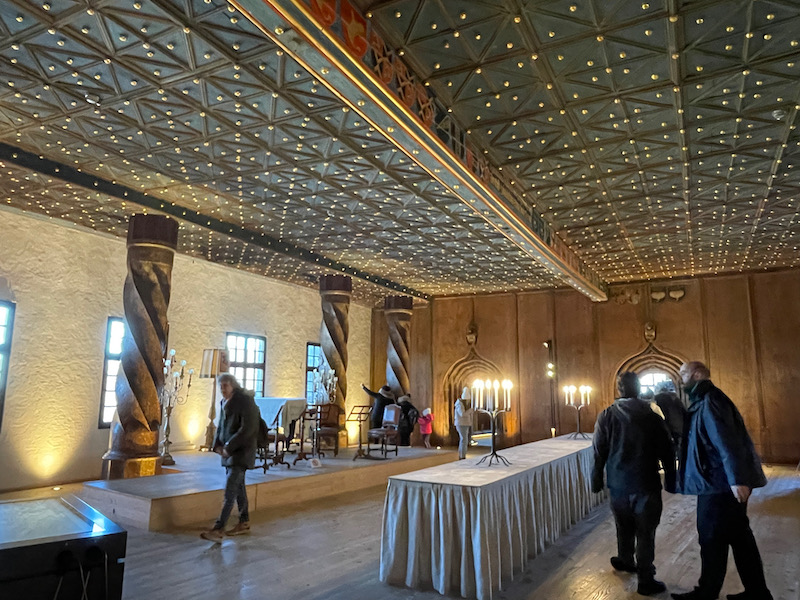
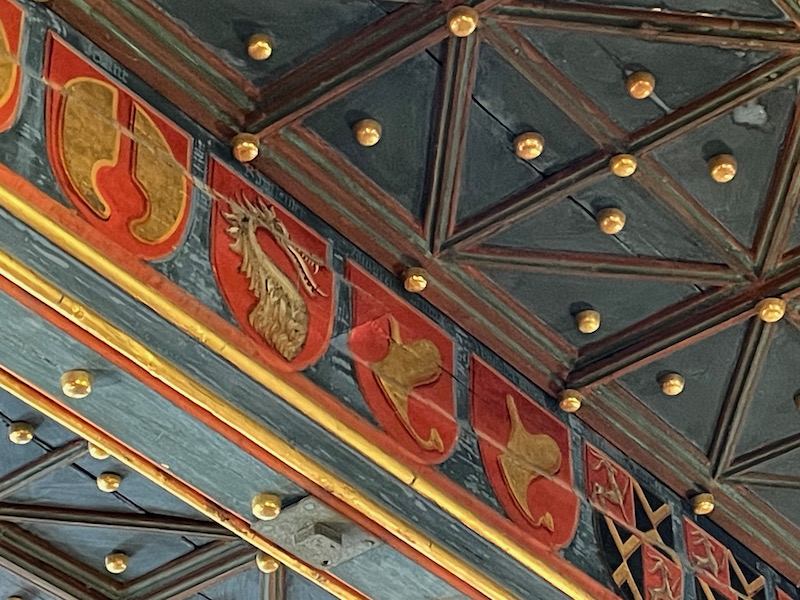

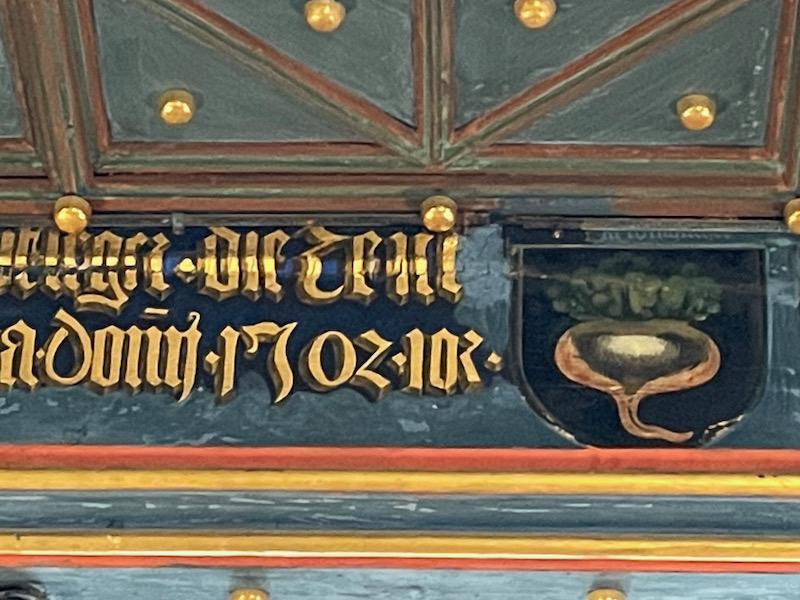
The Golden Chamber is the most richly decorated room and was was heated by a tiled stove, which dates from the Late Gothic period. No two tiles on the stove are alike, and they show relief-like plant motifs, religious images as well as biblical scenes Visitors probably sat waiting for their audience with the archbishop on the elaborately decorated benches with carved grapevines, grapes, leaves and animals.

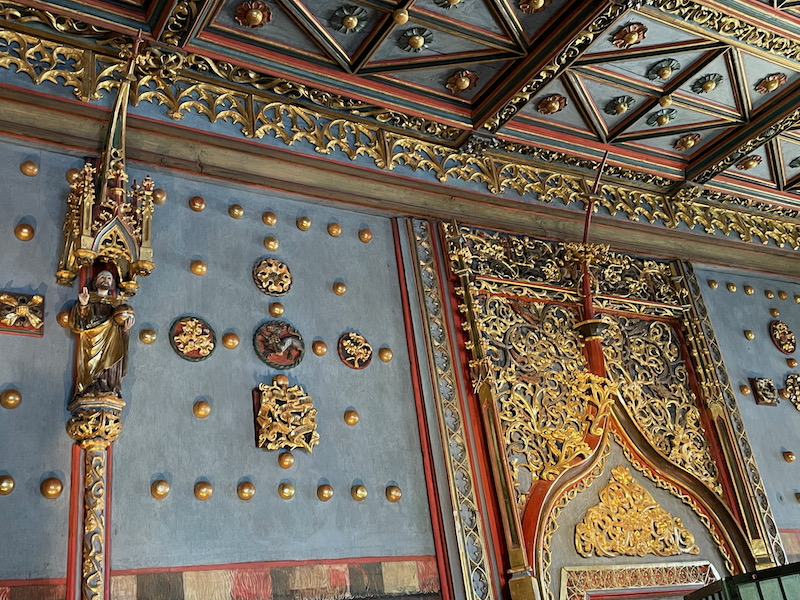
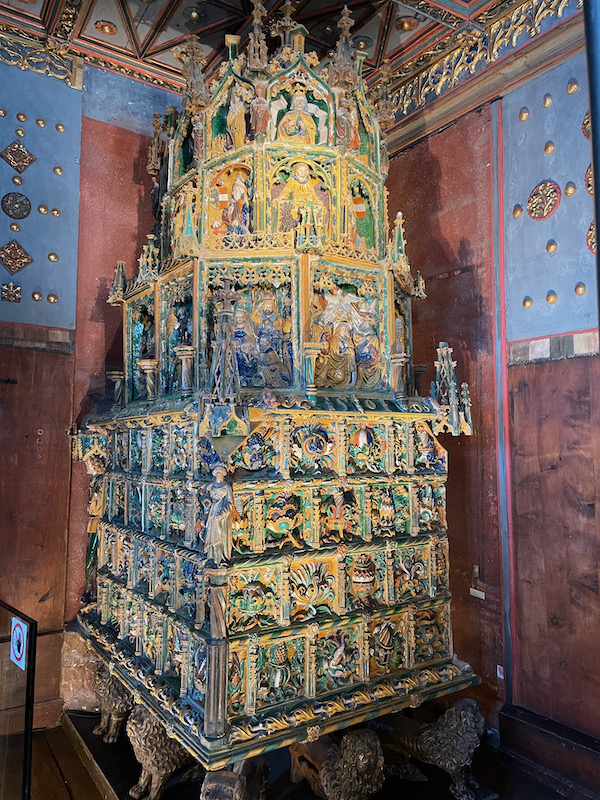



The bedchamber is also very richly decorated with lots of Late Gothic "flamboyant" carvings and decoration. Interestingly enough, it is one of the rooms that did NOT have a tiled heating stove. I guess it was more important to have the visitors be warm than the archbishop himself.
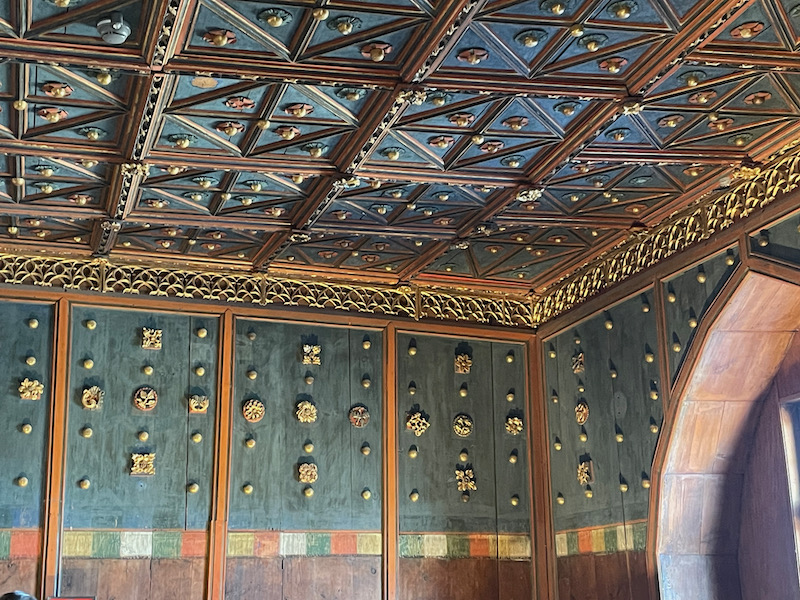

Historically, the kitchen would have been located in a different building than the main residence or castle because open fireplaces were always a fire hazard. This kitchen, the "lord's kitchen", was directly next to the archbishop's rooms and the cook here would only prepare food for the archbishop.

This hall was used for receptions and large banquets. In contract to the Golden Hall, the decoration here is pretty sparse with the exception of the wooden ceiling. This is because one of the later archbishops had the room redesigned as his "office", where he governed. This room also has a stove made in the 16th and 17th centuries.
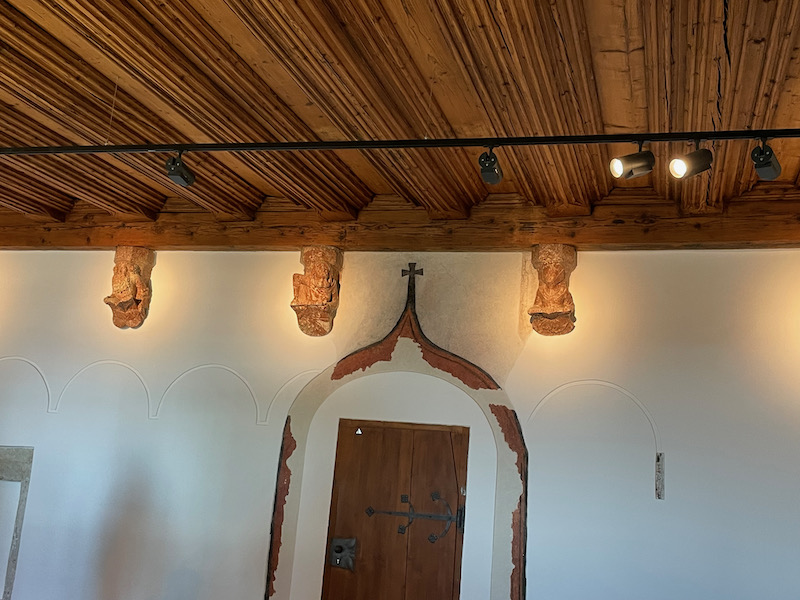


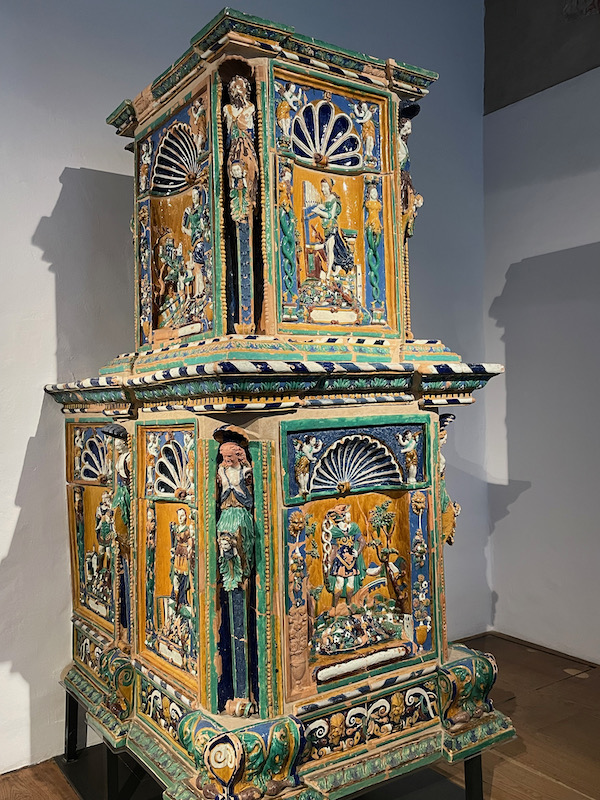
During renovations in 1998, these painted arcades were found. These date back to the 12th century and were open windows in the outside walls of the oldest part of the castle.

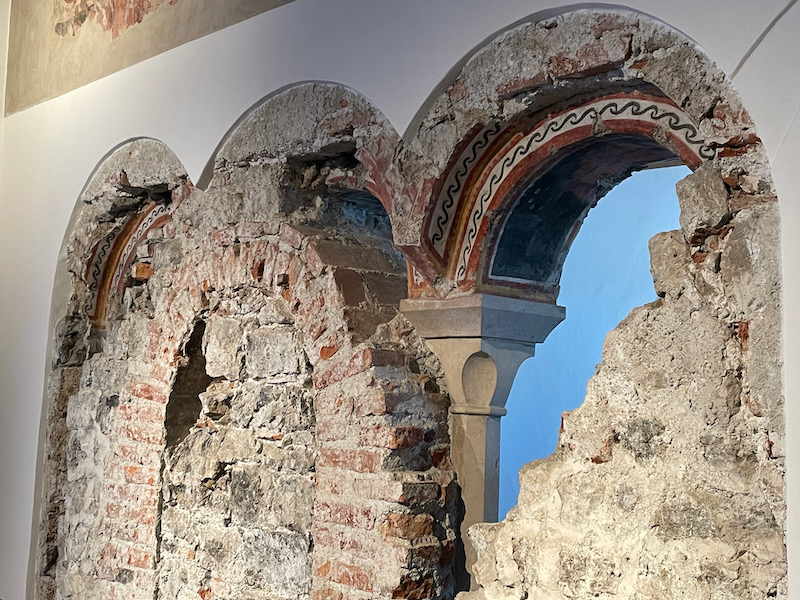
I mentioned that the fortress dates back to the 11th century. But 7 centuries before that, in the 4th century, a Roman tower was located up here on the cliff edge. There is a picture of what it probably looked like, and then the wall that was found during archaeological excavations.

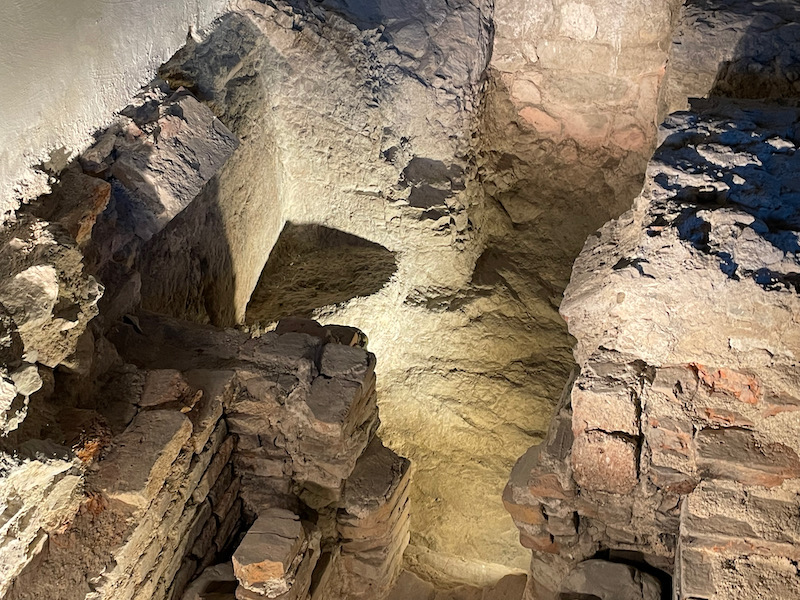

Then we had a little bit of fun in the Armory, where they had a bunch of interactive games and stations. Here, you pick an outfit from a variety of choices and then try to position your head in the right place.


There was a really nice view of the Duomo/Cathedral from here.

And finally, a night picture of the fortress on the cliff, with the funicular line lit up on the right-hand side.

Another concert, this time a violin concert with the same harpsichord accompanying her.
The first 2 nights, we caught a couple minutes of a brass band concert ... once on the roof of a restaurant, and the next on the roof of the Duomo.



Other than the dome and a couple crosses, you could have missed the Kajentaner-kirche as a church and thought it was just another building. The church dates back to 1686-1697 when a new church and seminary were build here, near the old city gates. The two symmetrically arranged three-story wing buildings of the former monastery enclose the church in the middle.
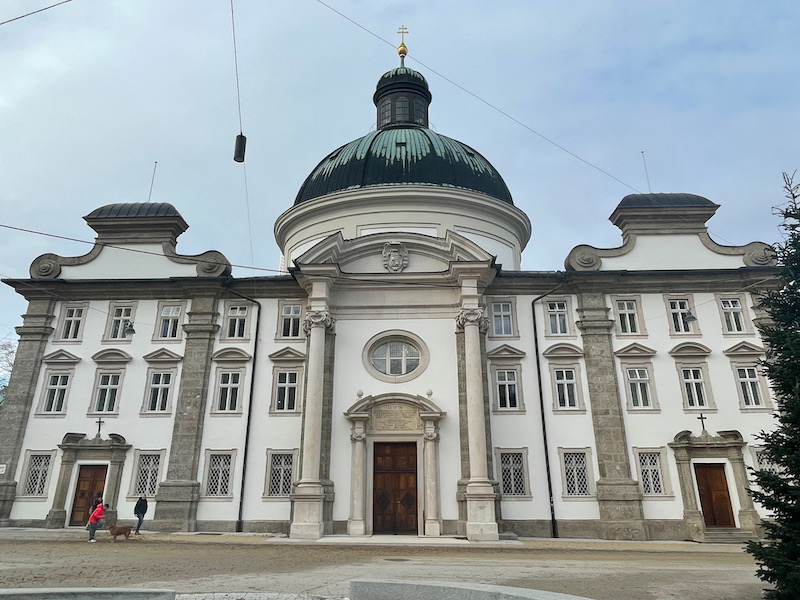
The altarpiece of the high altar shows the torture of St. Maximilian.
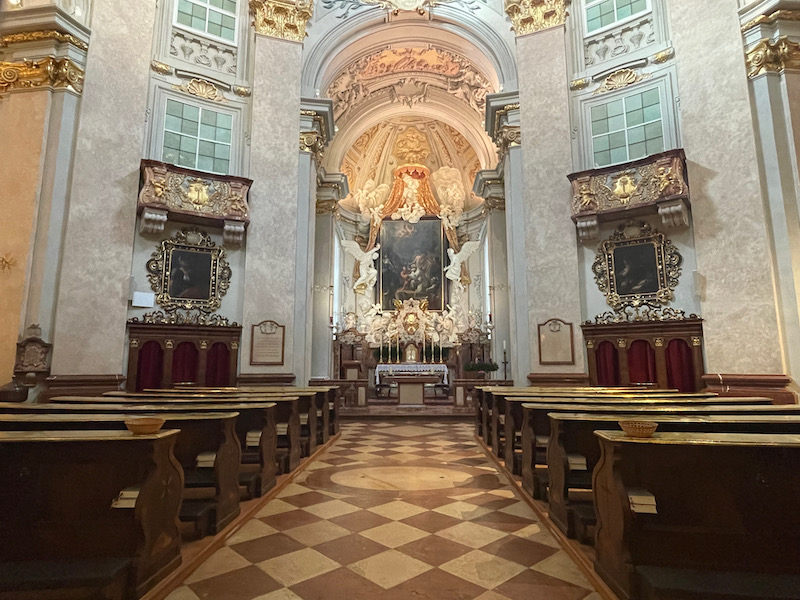

The dome fresco depicts the assumption of Saint Kajetan into heaven by the Holy Trinity in the presence of Saint Mary and the representatives of the Old and New Covenants. It isn't the best picture, but like some of the other churches, there was a large gate that was closed (only open during services) and so I had to take all of the pictures through the bars.
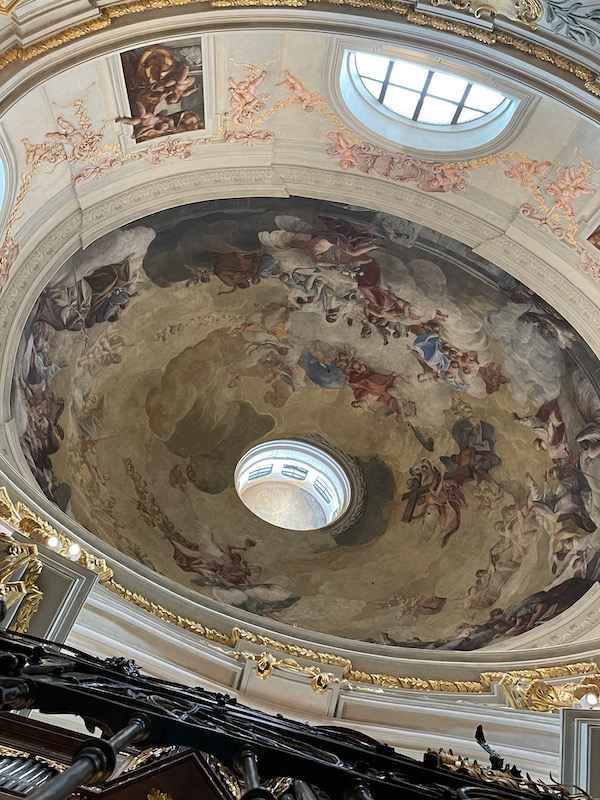

The Michaelstor was a city gate that provided access to the old town between 1620 and 1867, when it was demolished. The city gate was dedicated to the archangel Michael, which is where it got the name. Today you can see the associatedzeugwartstöckl (guardhouse) and a little bit of the wall.

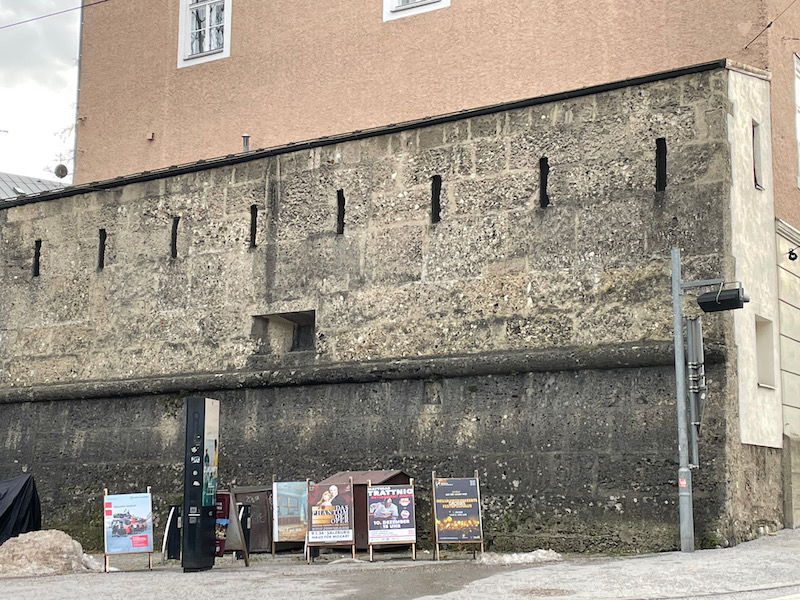
Holy trinity church (in German, the Dreifaltigkeitskirche) was built between 1694 and 1702 by the same architect that built the Collegiate Church at Universityplatz that we started this blog page with. You can definitely see some similarities. Like the Kajentaner-kirche, the church is only a small part of the building, the middle part, with 2 wings that housed the seminary.
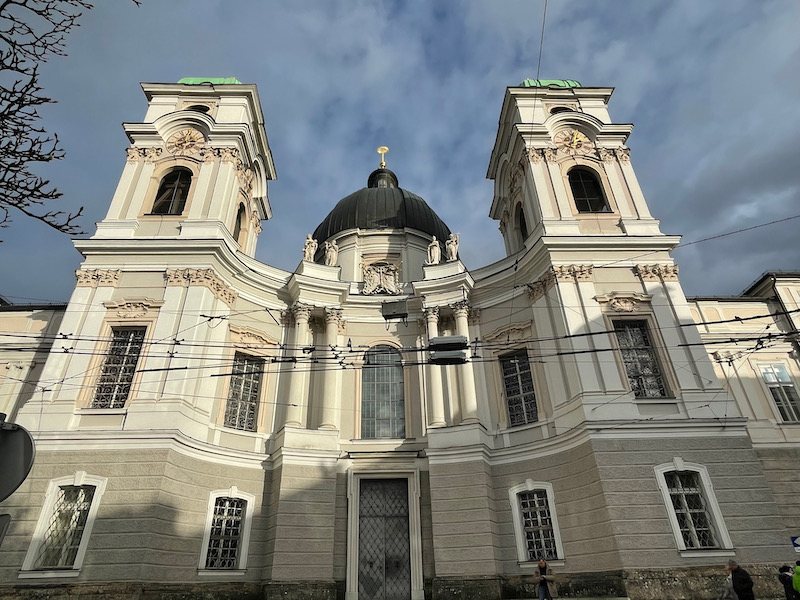
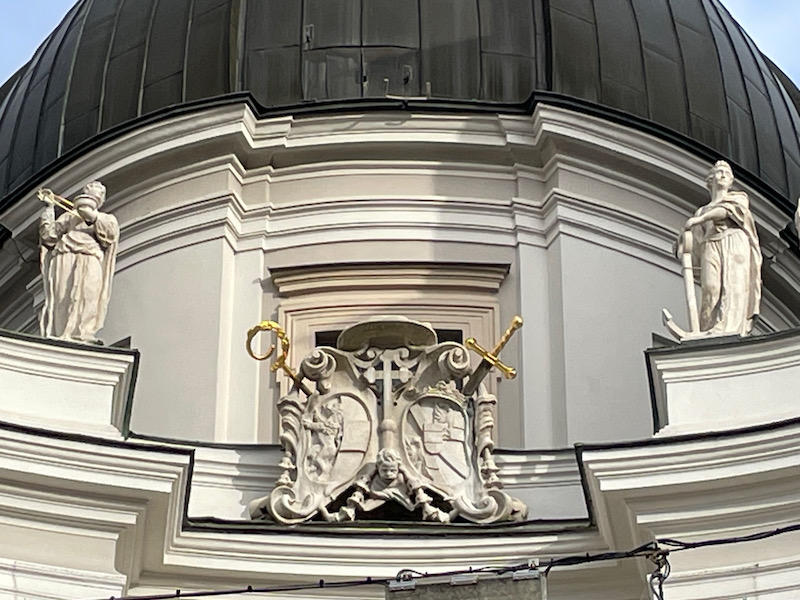
The interior is a bit different ... it is in the shape of an oval. You can see the same white walls with stucco decorations, and a painted dome. At the other end of the oval is the high altar, created in 1700 and revised in 1841. It was returned to its original state in 1947 and contains a sculptural group of the Trinity group with two adoring angels. (sorry for the less-than-clear picture of the altar) ... this was another church with a closed gate so I couldn't get close to anything.

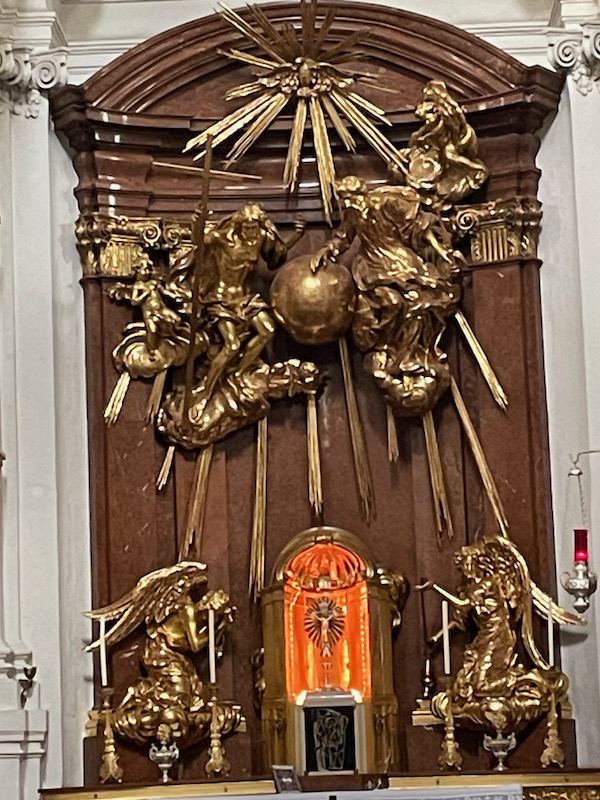
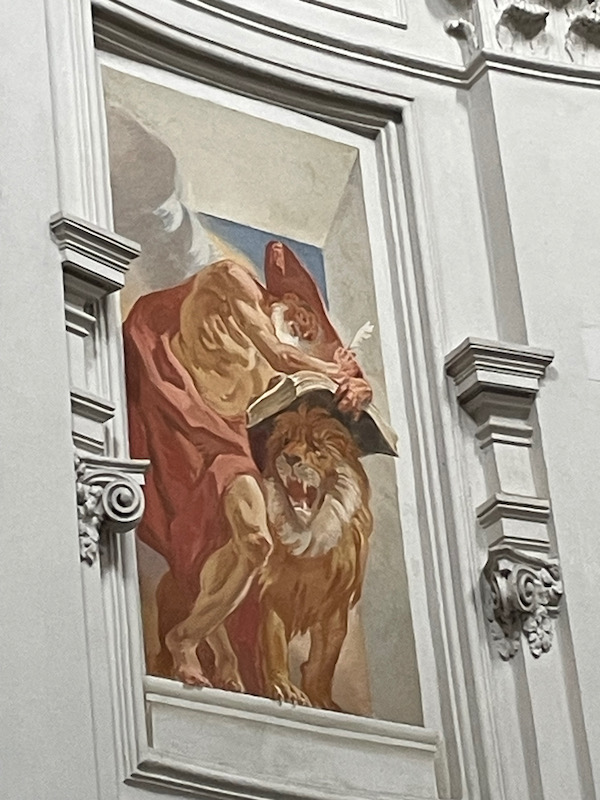
The large dome fresco, entitled Coronation of the Virgin, was done between 1697 and 1700. It shows the Coronation of the Virgin by the Holy Trinity with the assistance of the Archangel Michael, as well as other saints, angels, prophets, the 10 holy popes, and the Church patriarch. The figures are grouped in concentrically arranged cloud banks.


Continue on to to the last page of the blog.